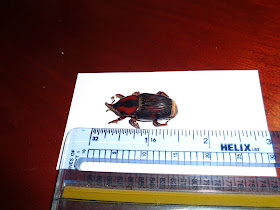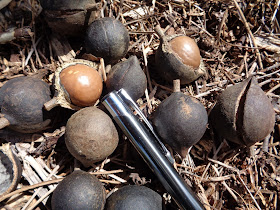We all need
to look towards the future for personal improvement and goal setting. The
backyard gardener should be no different and the New Year is a great time to
make some resolutions that will benefit any landscape. Let's look at some
tips, techniques and strategies that will make your horticultural experience in
Southwest Florida the best in 2017.
Your first
resolution should be to water properly.
Ø Water
your lawn and other plants only when they show signs of stress.
Ø Calibrate
your sprinkler(s) to apply 1/2 to 3/4 inch of water per application.
Ø Mow
lawns high to encourage a deeper, more drought and pest tolerant root
system.
Ø Use a drip or micro-spray irrigation
system to more efficiently water plant and flower beds.
Secondly,
feed your palms correctly.
Nutritional deficiencies not only lead to unthrifty looking plants, but may
also to the eventual death of the palm. All of these nutrients must be
provided in proper balance for good growth and healthy plants. A complete palm
fertilizer in a slow-release formula is the best maintenance fertilizer to use
on a regular basis as per the label instructions. Broadcast the fertilizer
under the canopy and not up against the trunk or in thick bands. As a
general recommendation, we suggest that you get your palm on a granular
fertilizer - 8-2-12-4 (or 8-0-12-4) applied in November, February and May as
per label directions. In August, use a 0-0-16-6, again as per label
directions.
Next, make
sure to prune your palms responsibly.
Palms need to retain all of their good, functional leaves. These leaves
are the "solar panels" of the palm- food making devises needed to
keep the plant alive. Premature removal of good fronds unnecessarily
weakens these plants which may predispose them to secondary problems.
What are some acceptable reasons for pruning a palm? Removing dead fronds
makes the palm look better and improves the overall appearance of the
landscape. Dead fronds which are loosely attached to the palm may fall
and injure people or damage property. Removing flower/fruit clusters is
also fine. Over-pruning can be detrimental to a palm, however.
"Hurricane cuts", as they are called, stresses the palm to a point
where there is an increased chance of disease and insect
invasion. New fronds take time to emerge and green fronds
should be protected and preserved.
Next,
resolve to plant the "right plant, in the right place". Sensible selection of
plant materials based on some knowledge of the plant is always best. For
example, a shade-loving plant will not do well in a full-sun site. A
plant that requires a somewhat drier environment may rot in a site regularly
watered. A tree that may grow up to sixty-foot tall and over one-hundred
feet wide would not be a good choice planted next to a house. Get to know
your plant materials and analyze your site before you plant. Let our
Florida-Friendly Landscaping™ program (FFL) help you with this!
In 2017,
use pesticides properly!
Key to the proper use of a pesticide is making sure to READ THE LABEL, THE
LABEL IS THE LAW! The pesticide label is a legal document that must
be followed to the letter. The label gives you a wealth of information such as
which pests it will control, what hosts it can be applied to, how to mix the
chemical, when it should it be applied, how much and how often and how to
protect yourself and the environment. Each label will contain a Signal
Word that will call attention to the degree of toxicity of each individual
pesticide. For instance, a Caution label indicates that it is
slightly toxic. A Warning signal word will indicate a pesticide
that is moderately toxic. For a home garden, stick to materials
with Caution labels to help minimize safety issues or use suggested non-toxic
cultural controls.
The last
resolution that I would like you to ponder for 2017 is to get to know your
bugs, especially good bugs.
Good bugs can also be called beneficial insects. Beneficial bugs are all
around us and help maintain the balance of nature as it relates to insect pests
in and around our landscape. A lady beetle eating an aphid is an example
of this. These insects are generally orange with black spots but may also appear
in shades of brown, red or black, with or without spots. The larvae look
like a miniature alligator with a scaly, elongated black and orange body.
Both adults and larvae eat aphids, scale insects, mealybugs, whiteflies, and
mites. Another beneficial insect is known as the lacewing. In both
brown and green forms, this insect produces a larva built for killing and
eating aphids. Large pincher mouthparts grab prey and suck fluids from
them. Let our office help you identify good and bad bugs.
Are you ready
for 2017? Let the Charlotte County Extension Service help you with all of
your horticultural educational needs. For more information on all types
of gardening subjects, please call our Master Gardener volunteers on the Plant
Lifeline on Mondays, Wednesdays and Fridays from 1 to 4 pm at 764-4340 for
gardening help and insight into their role as an Extension volunteer.
Don't forget to visit our other County Plant Clinics in the area. Please
check this link for a complete list of site locations, dates and times - http://charlotte.ifas.ufl.edu/horticulture/Plant%20Clinics%20Schedule.pdf.
Resources:
http://edis.ifas.ufl.edu/



















